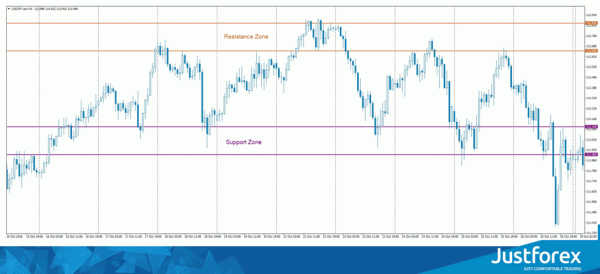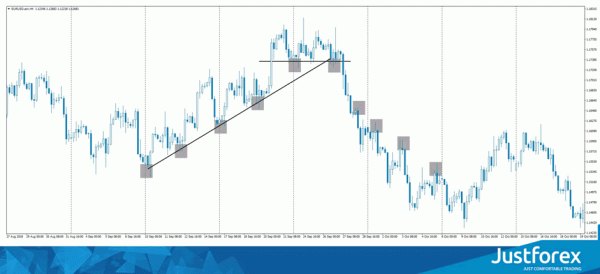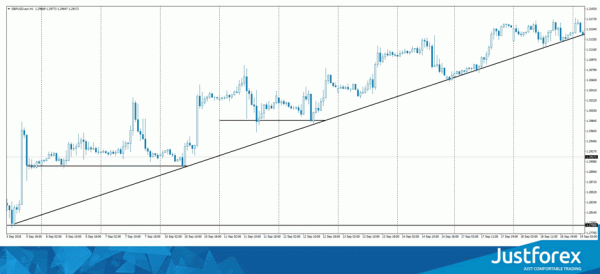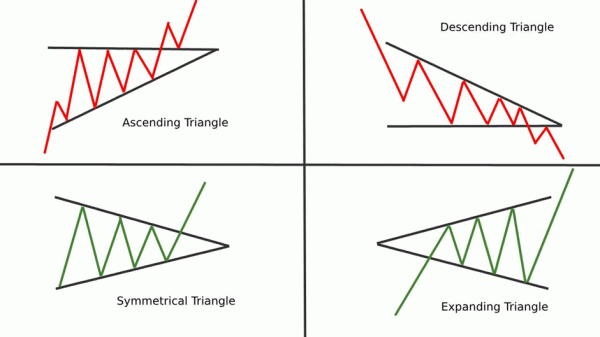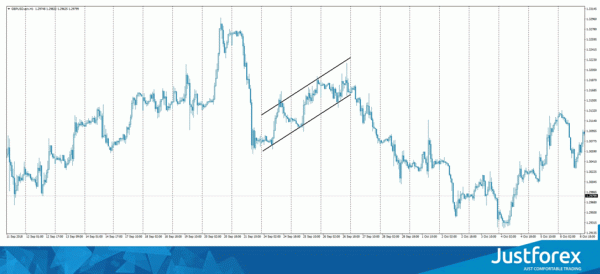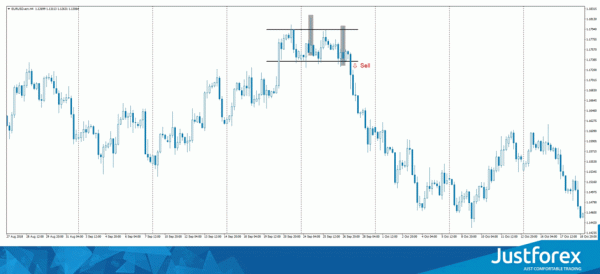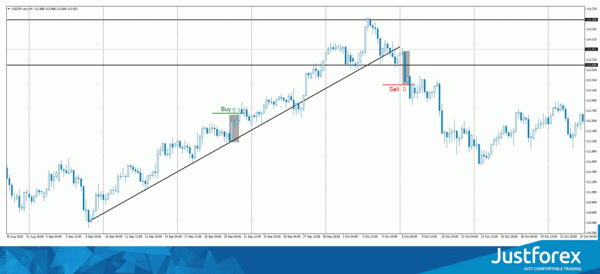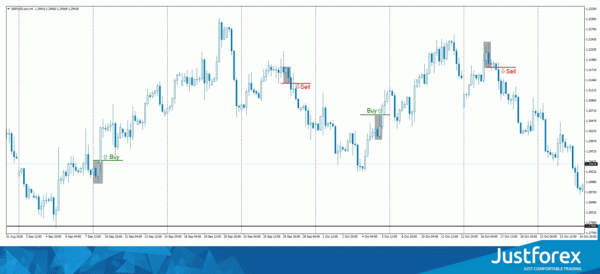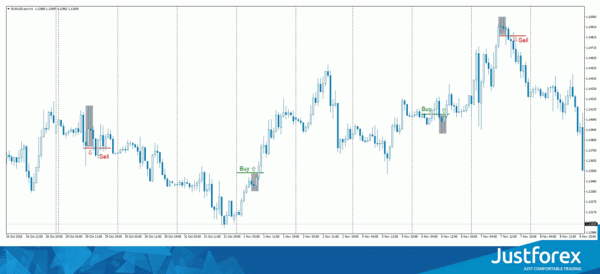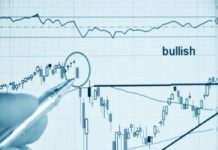If you want to trade on Forex, you need to keep up with it — read the news, analyses, various reports, market indicators and even the actions of other traders. It’s not that easy and puts people under a heavy emotional strain.
Luckily, there is another way. Price Action allows traders to predict the market using only the market itself, without any external data sources.
The Basics of Price Action
Price Action explains the events on the market via the chart patterns. These patterns are formed by the candles, which represent the values of currency pairs during different points in time. Using those patterns, the Price Action analysts can predict further events on the market and adjust their trading strategy.
Japanese Candlesticks
Japanese candlesticks are relatively new to the Western markets — they replaced the more traditional charts only during the 1990s. Unlike the bar or line charts, Japanese candlesticks report not only the opening and closing prices but also the dynamic of the trends during the timeframe.
Here’s how the candlesticks represent the data:
- The body shows the price of an asset at the beginning and the end of the timeframe.
- The shadow (a thin line beyond the body) represents the maximum and minimum price during the candlestick existence.
- The color represents the direction of the price movement within the timeframe. Green candles move up, red candles move down.
Delayed Orders
There are two ways to create a Forex order:
- Market orders are executed at the current market price.
- Delayed orders are executed at the previously determined price and are ignored until the market price is the same.
When it comes to Price Action trading, using delayed orders is pretty much the only way. They help to minimize the risk and often serve as insurance against the bad judgment.
There are several types of delayed orders:
- BuyStop. A delayed purchase order for a price higher than the current one.
- BuyLimit. A delayed purchase order for a price lower than the current one.
- SellStop. A delayed sale order for a price lower than the current one.
- SellLimit. A delayed sale order for a price higher than the current one.
Delayed orders also can have StopLoss and TakeProfit modifiers.
- StopLoss. Allows setting the limit on the order loss. If the loss exceeds the limit, the order will automatically close.
- TakeProfit. Allows setting the limit on the order profits. Once the profit reaches the limit, the order will automatically close.
The Support and Resistance Levels
When a trend hits a level, it either breaks through it or changes direction. It happens because the traders put StopLoss and TakeProfit orders on those levels. So, in a way, it is the traders who determine the levels.
The support level represents the minimal possible price of an asset. This is where most people prefer to buy assets, which causes their value to grow and creates an ascending trend. Once this trend reaches the maximum possible price, the traders will sell the asset, which will cause the price to start descending. The point where it happens is called the resistance level.
Sometimes trends break before they hit a level — for example, due to external news or a sudden high-level player intervention. Generally, we say that a trend breaks when two consecutive candlesticks close outside of it. After a breakout, a resistance level becomes a support level and vice versa.
Sometimes there is more than one support and resistance level. For example, yesterday the price couldn’t break through 1.12000, but two days ago it reached 1.12500. In that case, consider both levels when you set the orders up. Just don’t put too many layers on the chart. Only layers that have formed during the last 200 candles carry any significant weight.
Different levels also have different strengths. When you are trying to see which level is stronger, consider the following:
- Is it a round number?
- Is it a returning level that was important in the past?
- Is it a local maximum?
- Is it obvious on the chart?
The more “yes” answers you get, the stronger your level is. Stronger levels are harder to break, so consider this when devising your strategy.
The Trends and How to Define Them
A trend determines the overall mood of the market. There are two types of trends:
- An ascending trend is a series of increasing minimums and maximums.
- A descending trend is a series of decreasing minimums and maximums.
When a trend breaks through the previous minimums or maximums, it can “break out” and change into an opposite trend.
A correction is another type of movement. It is a small opposite movement that appears once the trend is over. There is also consolidation — a flat movement of the price before the trend established itself.
Trend Lines
Traditionally, traders determine the trends with moving averages — it’s easier and allows to assess the situation on the market faster. However, when it comes to Price Action, moving averages are not particularly useful. Instead, you need to build the trend lines.
Imagine an ascending trend — one where both the support and resistance are growing at a steady rate. Draw a line through the minimum values of such chart. Then through the maximum.
These lines are called the trend lines and by knowing how to read them, you can predict the future situation on the market.
Chart Patterns
There are two chart patterns you should know: a triangle and a flag. There are more but realistically you will never need them.
Triangle
A triangle is formed when the support and the resistance line cross over. They can form either an ascending triangle (with a static resistance and ascending support), a descending triangle (with a static support and descending resistance), a symmetrical triangle (with both support and resistance converging at one point) or a ranging triangle (with both support and resistance moving away from each other).
All triangles signal an upcoming breakout. The direction of this breakout is the direction of the triangle itself or, in the case of a symmetrical triangle, a direction of the trend before the triangle has been formed. The only exception is the ranging triangle, which is a signal to exit the market immediately since the trends within it become volatile and unpredictable.
Flag
A flag forms when the support and the resistance lines are parallel to each other. A flag can be ascending, rectangular or descending.
A flag is a correction pattern which means that it is bound to break out in the opposite direction. A lot of newcomers to Forex lose their money because they do not know about this, so be careful.
A rectangular flag is a signal to exit the market immediately. Just like a ranging triangle, it creates volatile and unpredictable trends.
This article was brought to you by JustForex. Our traders enjoy exclusive daily analytics, high leverage and spreads from 0 pips. If you liked what you read and want to start trading with a reliable broker with 100% bonus — check out JustForex.com.
The Candlestick Patterns
Chart patterns are great for long-term predictions, however, they often lack precision for the real-time trading. Luckily, there are also candlestick patterns — a more relevant and precise tool in a Price Action trader arsenal.
Pin bar
A pin bar is a candlestick that has no body (or an only a tiny one) and a long shadow on one side. It often precedes a change of trend.
There needs to be at least some movement before a pin bar. If the market is mostly flat, you can safely ignore any pin bar you find.
The best entry point for pin bar is in the direction of the new trend, right behind the shorter shadow. The best StopLoss point is behind the longer shadow. TakeProfit is best set up at the StopLoss value multiplied by 3.
Internal bar
An internal bar (inside bar) is a large candlestick without any shadows, followed by a smaller opposite candlestick. Ideally, the first candlestick should be at least twice the size of the second one.
To enter the market at an internal bar, create a delayed order in the direction of the first candlestick. StopLoss should be placed right behind the shorter candlestick. Place TakeProfit on the opposite level.
Outside bar
An outside bar forms when a smaller candle is followed by a larger opposite one.
To enter a market at an outside bar, set up a delayed order in the direction of a shorter candlestick. Close by StopLoss if the price gets behind the longer candlestick. TakeProfit when the price reaches the opposite level.
Fake breakout
A fake breakout happens when a candlestick breaks the level with its shadow but closes in a different direction.
Do not enter the market during a fake breakout. Wait until the new trend establishes itself. Close by StopLoss if the price gets above the level of the breakout, close by TakeProfit once it reaches the opposite level.
Double High/Double Low
DHDL forms when two candlesticks cannot break through some arbitrary level. This patter is viable only on longer timeframes like D1 or H4.
To enter the market during DHDL, place an order limit right before the level, to trigger once the price bounces. Close by StopLoss if the price finally breaks through the level. Close by TakeProfit at the opposite level.
Conclusion
Price Action is a great way to trade on unfamiliar markets. It is also not exclusive — nothing stops you from supplementing your Price Action strategy with the real-world data. During crises, this might be the best way to so, since Price Action is not infallible and depends on the adequacy of the other traders on the market. Which is not always a given.




